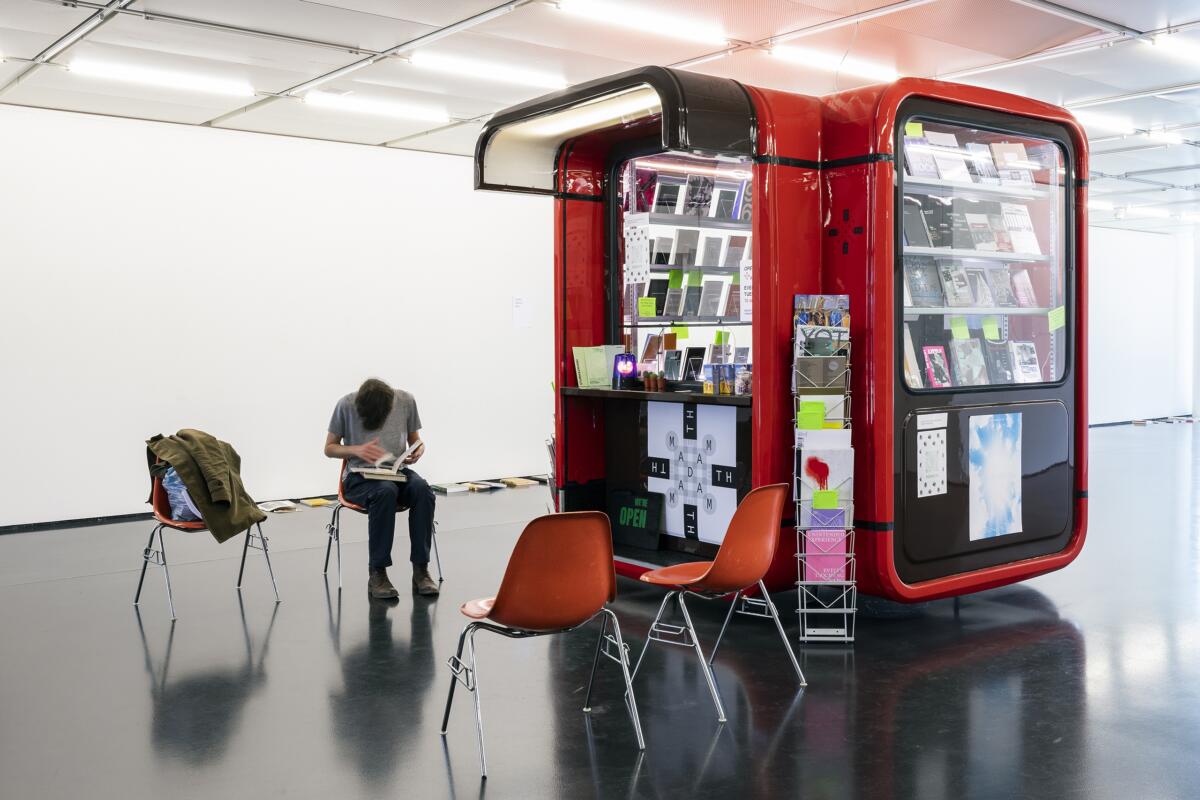
“In the books you will find the names of kings. / Did the kings haul up the lumps of rock?”— asks Bertolt Brecht in his poem “Questions from a Worker Who Reads” (1935). Life, Without Buildings follows on from the eponymous seminar held at ETH in 2021, which explored possibilities of life beyond the architectural and infrastructural confinement of the built environment. The title of the exhibition (and of the seminar) was inspired by the name of the Glasgow band Life Without Buildings (active between 1999 and 2002). The show also seeks to repoliticize the call of Superstudio for a “life without objects”— an anarchitecture of unconfinement, a living freed from design.
Life, Without Buildings conceives architecture through the lens of contemporary conditions involving the issues of labor, displacement, and homelessness that are all too often cast off in architectural practice, as well as in the history and theory of architecture, an omission reflecting a larger pattern of depoliticized life in the neoliberal era. And yet, this generalized state of “unhomeliness,” a sudden realization that life is fundamentally out of joint, without fixed parameters and in danger, comes to define our present moment, indelibly marked by the Russian invasion of Ukraine, a war that involves us all—the war that lends a different meaning to the titular question of Josep Lluis Sert’s 1942 pamphlet on evolution of modern city: Can our cities survive?



Some of the participants in the show were trained as architects; others were not. They are artists and writers, designers and photographers, who question the boundaries of their professions and put their métier to the test. Bas Jan Ader’s performances were often staged as falls—instances of the force of gravity manifesting itself against the built environment, such as in Fall 1 (1970), which involved the artist’s tumbling down and off a roof of his Los Angeles house, the epitome of American suburbia. Domesticated Mountain (2012) by Andreas Angelidakis is a cave-like dwelling built of cardboard packaging used by various companies to ship consumer goods via the global suburbia of the internet. Aristide Antonas, in his recent book Archipelago of Protocols, speculates about opening a new world of social relations, radically rethinking outdated forms and failing functions of an urban environment. His installation in the show, Discipline of the Insignificant (2022), looks at contemporary Athens as a potential “theatre and circus of ruins,” while it parallelly reflects on the transformation of the cargo terminal in the port of Piraeus, overtaken by the Chinese company COSCO during the economic crisis in Greece. John Berger’s 1975 book A Seventh Man, written in a Brechtian spirit, brought to light the systemic exploitation of migrant workers from the South in Western Europe, including Switzerland. His critique of the economy behind the large infrastructural projects echoes in contemporary movements resisting oppression of workers globally, including the Gulf Labor Artists Coalition with their motto “Who’s Building the Guggenheim Abu Dhabi?” Drawings by Miriam Cahn, executed in 1979 for a scale model of the Parthenon (Athens, 5th century BCE) built in Basel, are an example of a commissioned work— studies and renderings of the metopes of the frieze in pencil—rather than works of art that are primarily “creative” in their intention. Peter Friedl’s models German Village (2014–2015) and Tripoli (2015) from his series Rehousing (started 2012) relate to both realized and unrealized architectures and their histories, probing the limits of an otherwise functional or didactic genre. German Village is a model of a single
block of high-gabled, prewar Berlin working-class housing, commissioned by the Chemical Warfare Corps of the U.S. Army and built in Utah desert. It was designed by a modernist Jewish-German architect Erich Mendelsohn (1887–1953) who settled in the U.S. in 1941 after a spell in England, and the architecture was built for military tests helping to plan the destruction of working-class districts of Berlin. The model Tripoli is based on a 1931 sketch for an unrealized FIAT branch building in Tripoli, Libya, by Italian architects Carlo Enrico Rava (1903–1986) and Sebastiano Larco Silva (1901–n.d.), a near-forgotten piece of colonial modernism. The series’ title is reminiscent of the Homelessness Prevention and Rapid Re-Housing Program introduced by the U.S. Department of Housing and Urban Development in 2009. Friedl’s contribution also includes a short video animation, Home Tree Home (2002), in which the work’s titular home—a simple wooden tree house—is quickly destroyed thrice: first blown away by hurricane, then falling down after a tree is cut with a saw, and finally smashed into pieces by one blow of a huge fist. David Harding worked as Town Artist of Glenrothes, Scotland, from 1968 to 1978 to then continue his engagement with art in urban contexts as head of the Environmental Art Department founded through Harding’s vital commitment at The Glasgow School of Art in 1985. Curated by Salvatore Lacagnina, the photographic documentation of Harding’s sculptural practice in social context at Glenrothes, alongside excerpts from his texts addressing that period, is included as part of the exhibition. Edi Hila’s paintings from the show Al di là del vetro (On the Other Side of the Glass) (2022) depict architectural models of exhibition spaces as buildings whose scale seems to outgrow the domestic interiors in which they are set. Doruntina Kastrati presents a group of her recent cast-resin sculptures of body parts and surfaces, Public Heroes and Secrets, and a video featuring interviews with workers who experienced accidents while employed, on minimum wages and without legal protection, on construction sites in Kosovo. Ibrahim Mahama’s contribution includes images of the Parliament of Ghosts, the artist’s ongoing project, taken at Redclay in Tamale, Ghana—an institution Mahama founded and built with local collaborators and inaugurated in 2020 as part of a large framework of public spaces. Also included are archival photographs of empowered workers at industrial plants and railway network facilities in mid- to late-20th-century Ghana. Anna Molska’s video W=F*s (Work) (2008) portrays a group of workers commissioned to build a metal structure in a non-descript muddy landscape. Upon completing the construction, the builders climb it to casually pose for the camera—a small act of bravado, tinged with vulnerability. Ahlam Shibli’s series of photographs Market (2005) is a portrait of migrant street vendors in their improvised market in Turin that is organized through human interactions—all the while its life flowing against the powerful structure of the existing streets, pavements, and walls of buildings that provide little comfort to the “unrecognized” city dwellers. The collective Tercerunquinto introduce a group of works from the series Casa pintada igual que la del vecino (Ejercicio pictórico)—A House Painted Like the One of the Neighbour (Picture Exercise) (2013). Modest examples of urban mimicry or the popular opportunism that leads to a tactical elimination of originality in favor of what’s common, the paintings are paired with a performative intervention in the gallery in which only a section of the wall within reach of a painter working in a constrained position is painted. The colors of paint correspond to those the inhabitants of less well-off districts of Mexico City are encouraged to use by local authorities in order to achieve a greater visual coherence in residential areas. Walls fill the surface of the studies by Yannis Tsarouchis (1905–1989), as in Stone Wall of Epidauros (1965), which was also used for promotional calendar Tsarouchis designed for the Greek concrete manufacturer AGET Heracles in 1975. Several of his works, including an initial study (1968) for a painting of a butterfly-winged Spirit of Boredom hovering, in different variants of the work, over the equally iconic harbors of Piraeus and Thessaloniki, are presented on cotton-covered wood-frame walls—themselves a fragment of a display structure designed by Andreas Angelidakis for Tsarouchis’s survey exhibition at Wrightwood 659 in Chicago in 2021, which then remained unrealized. The works of Allyson Vieira—among them a series of photographs created in the context of her book project On the Rock (2019) comprising interviews with the marble workers involved in the ongoing restoration of the Acropolis in Athens—confront cultural and architectural content with its material and human discontents. Her two large weavings, made of construction site debris netting, GTFO (2021) and This Place Is Not a Place of Honor (2020) relate to archaic apotropaic imagery. Additionally, they draw on a gamers’ slang (GTFO standing for Get The Fuck Out) as well as the speculative futurist thinking of the Human Interference Task Force, a U.S. Department of Energy and Bechtel Corp. project established in 1981. The Task Force was created to reduce the likelihood of future humans unintentionally intruding on radioactive waste-isolation systems. In that sense, the weavings constitute a warning to the future (the rest of the sentence in the title of the second weaving consequently reads “we believe this place is not dangerous IF IT IS LEFT ALONE!”).
The exhibition also includes two works by former students of the “Life Without Buildings” seminar presented at the Alumni Lounge adjoining the gallery: a video installation, PRODUCTION/CONSUMPTION, installed on a coffee table by Vasco Medici/Elisa Pezza; and Mother and Child, Divided by Armand Zanota, a digital animation presented on a monitor above the bar. These works aim at exposing and complexifying the relationship between the gta exhibitions’ gallery and the Alumni Lounge (a lunch café and bar), which used to be one space—a cafeteria of the ETH campus—until part of it was converted into exhibition space in the 2000s.

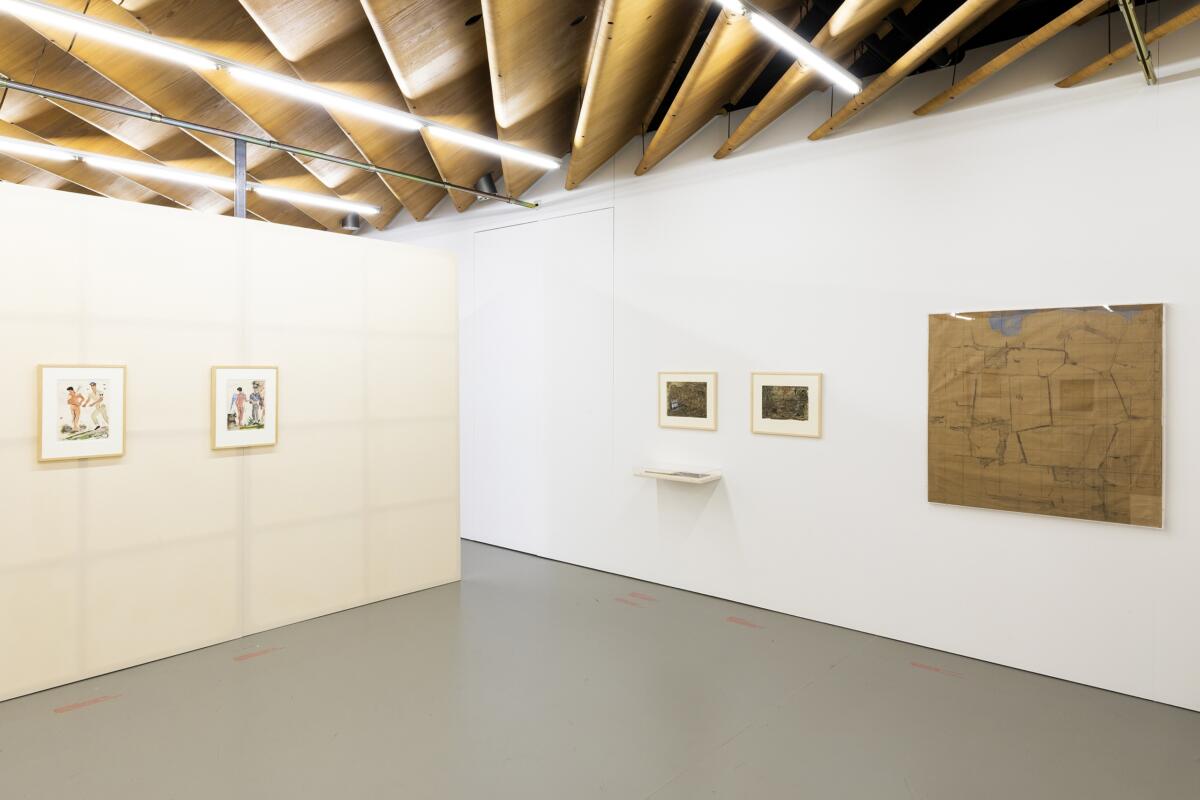
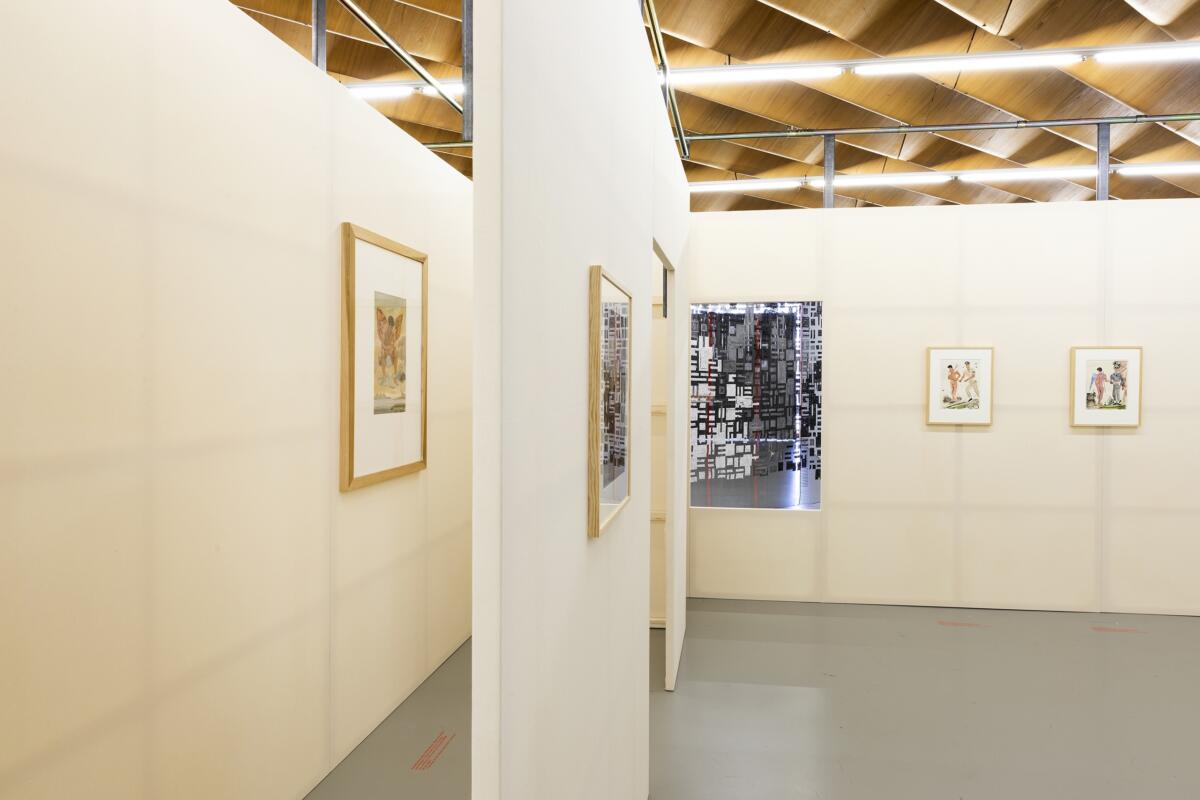

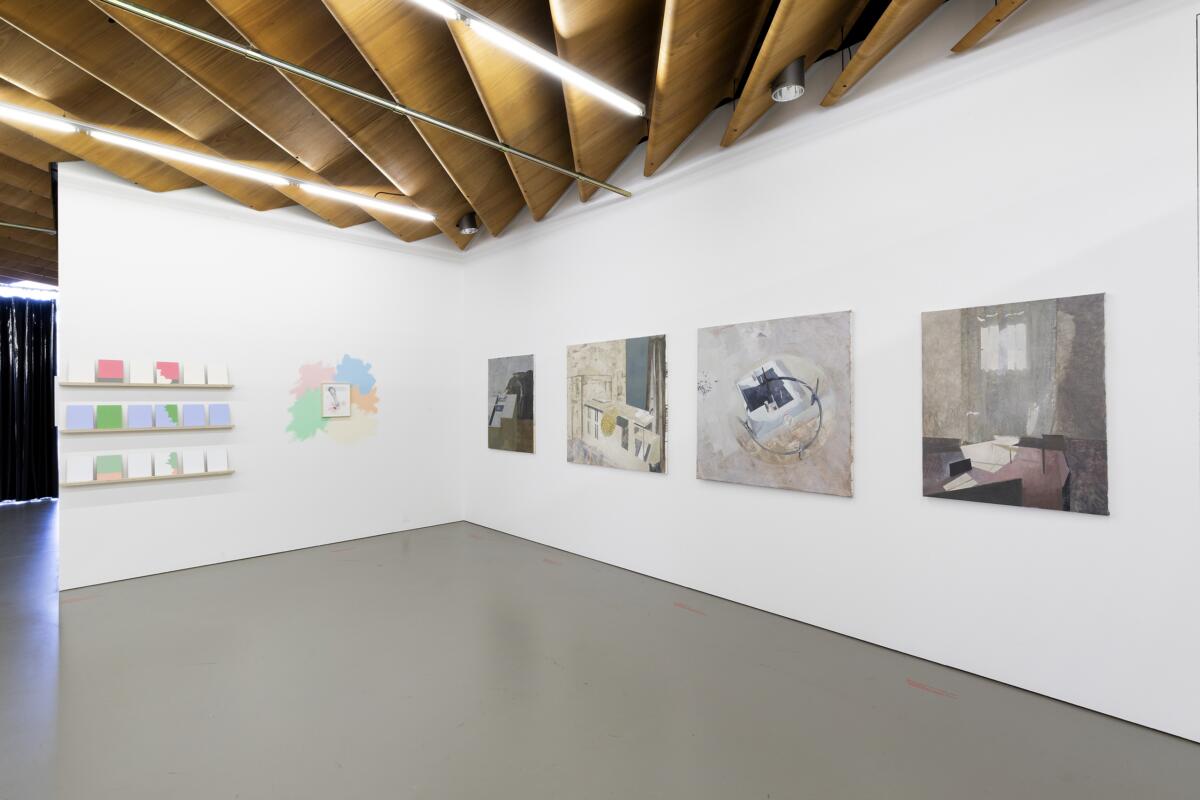
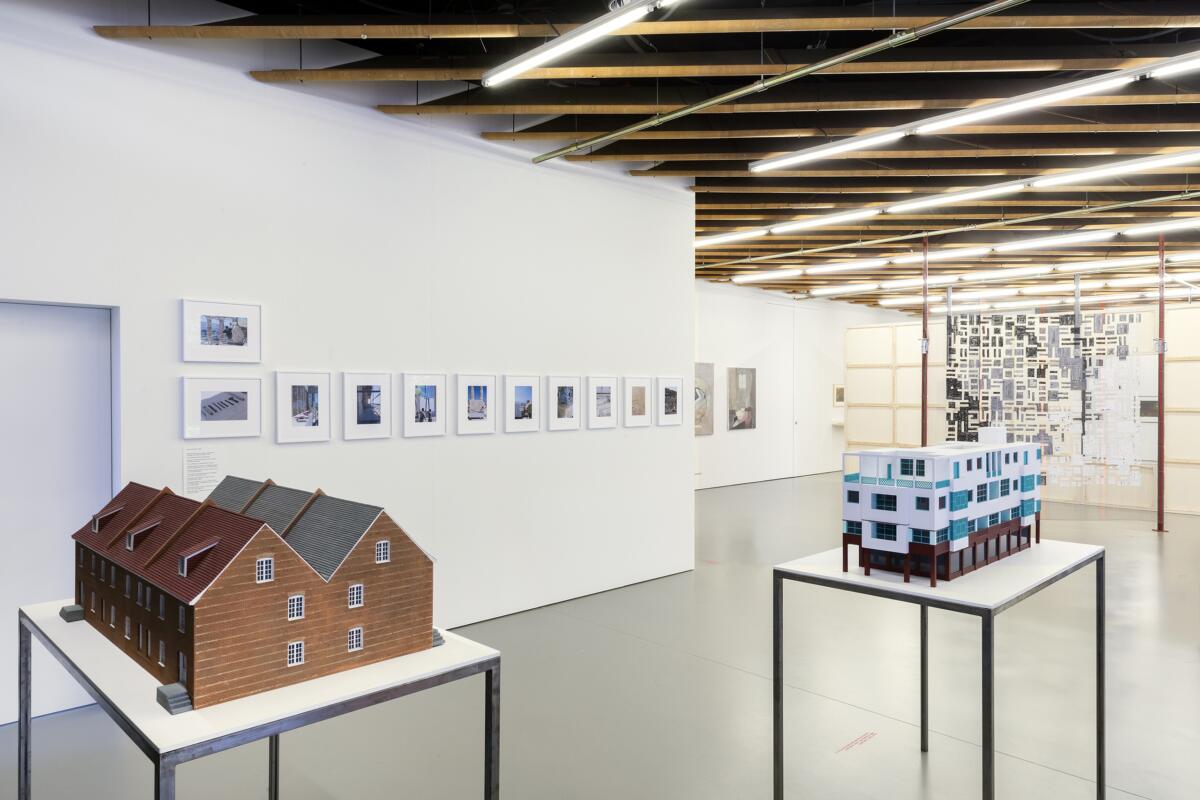
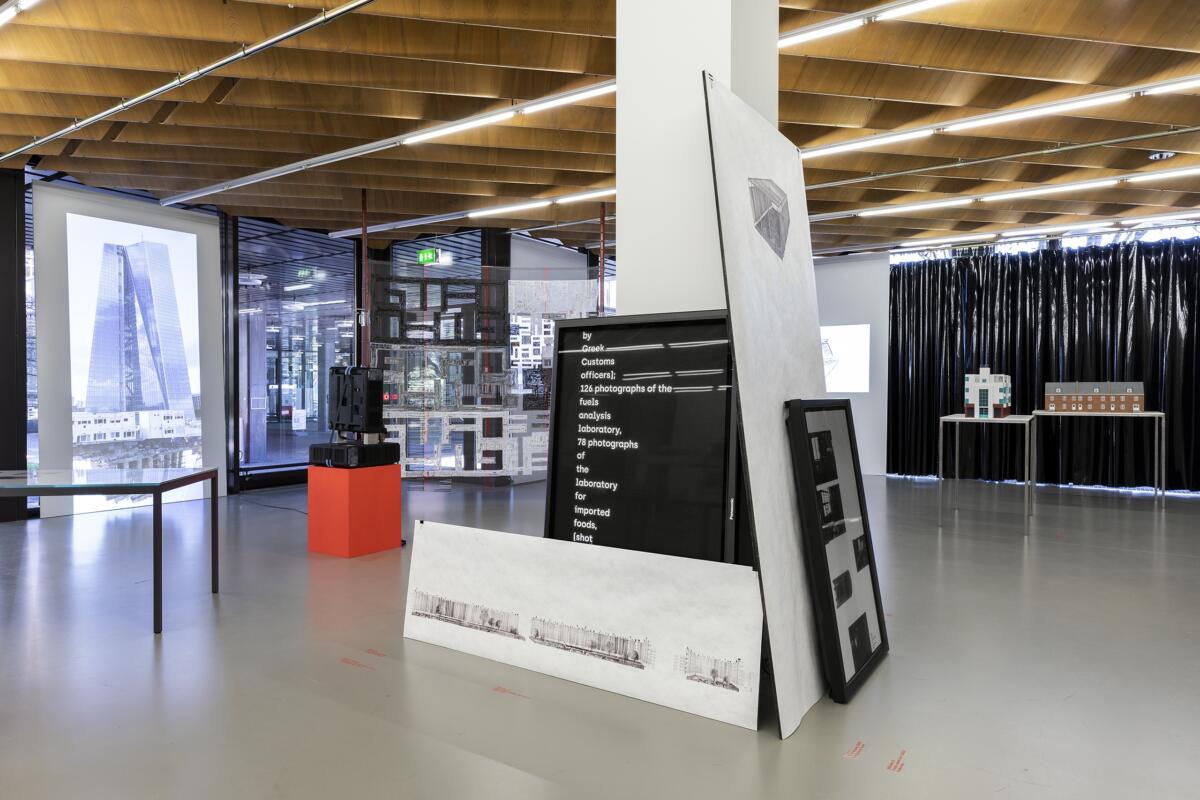








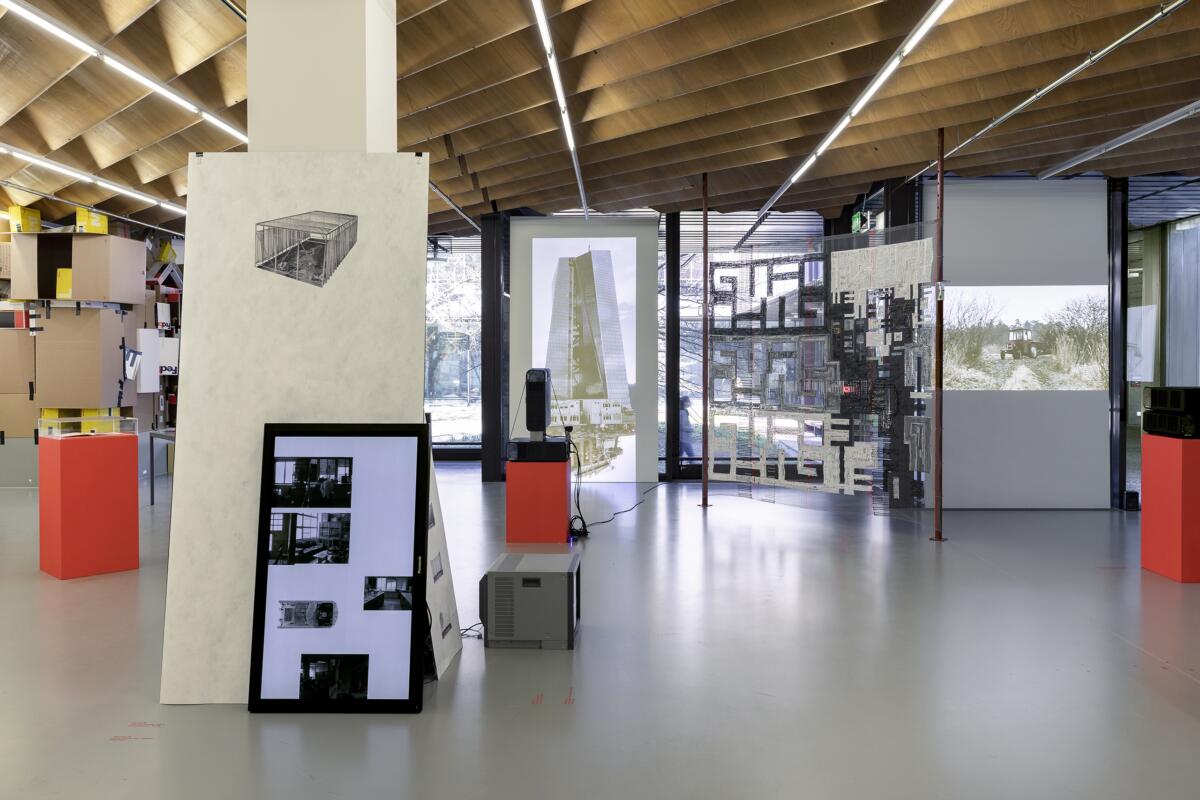
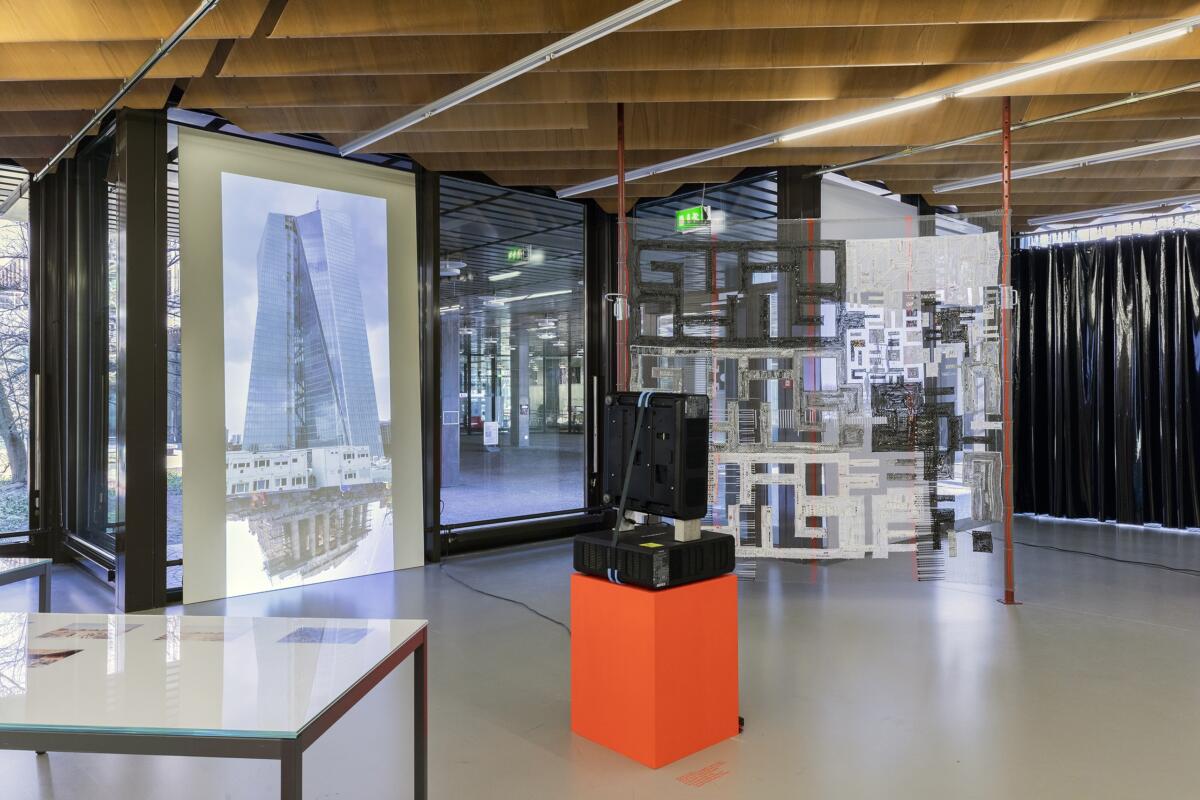
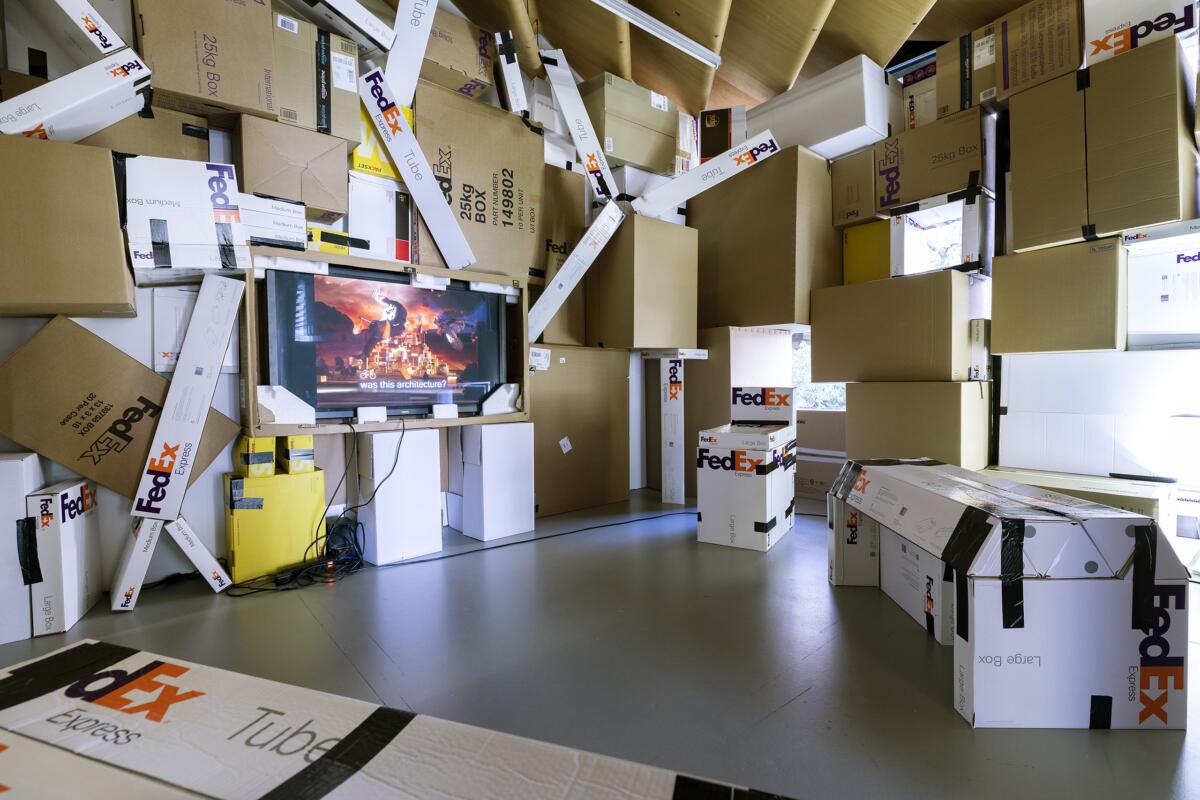
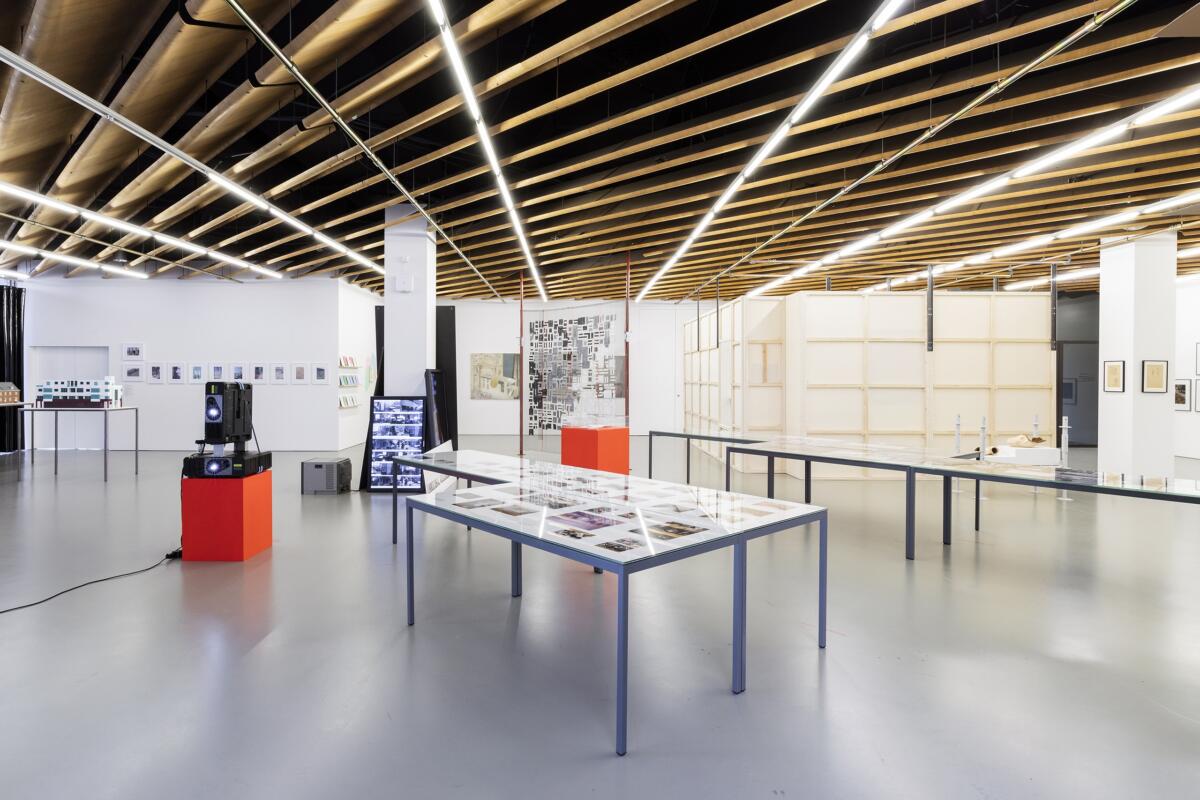


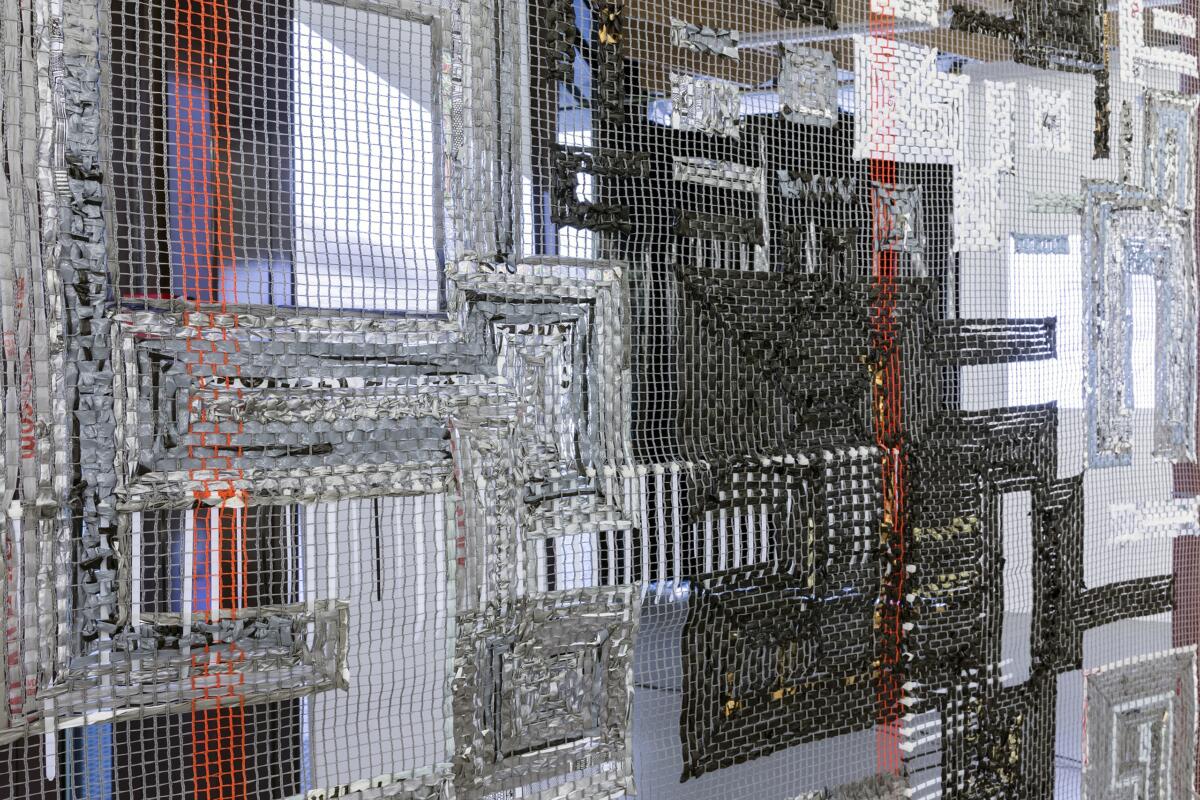

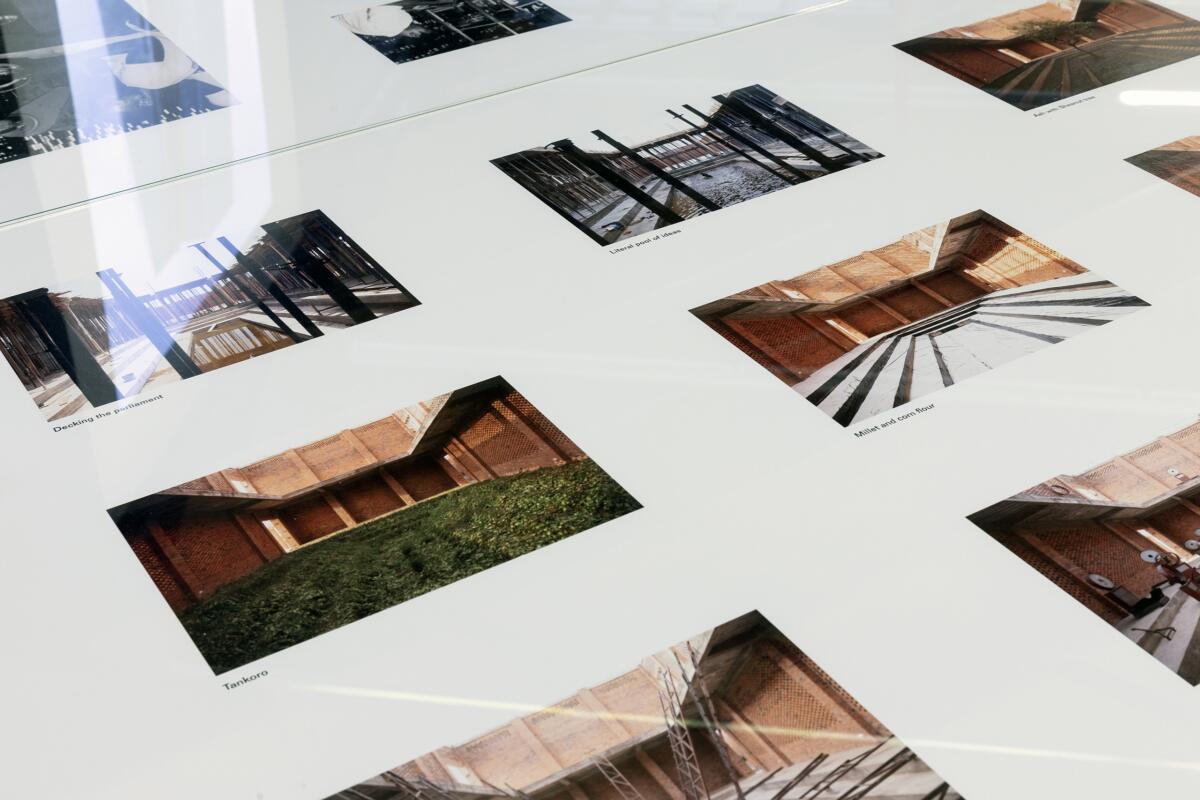
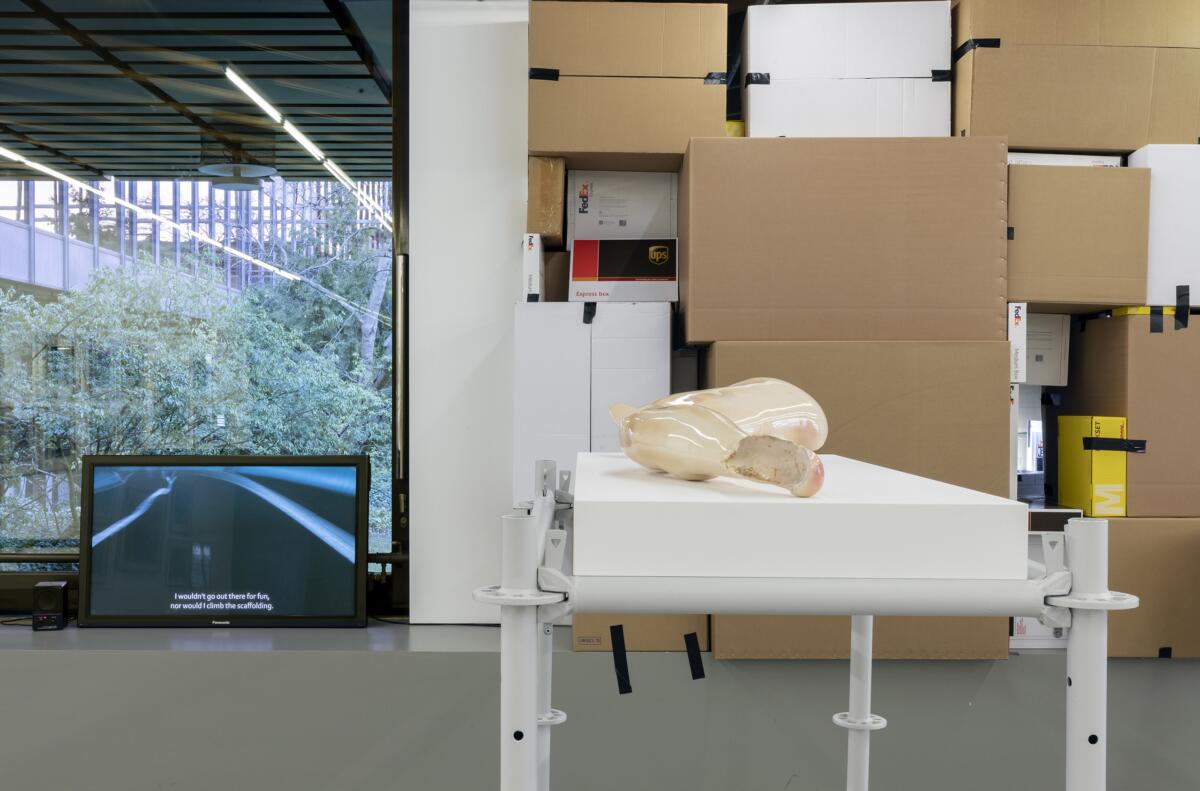
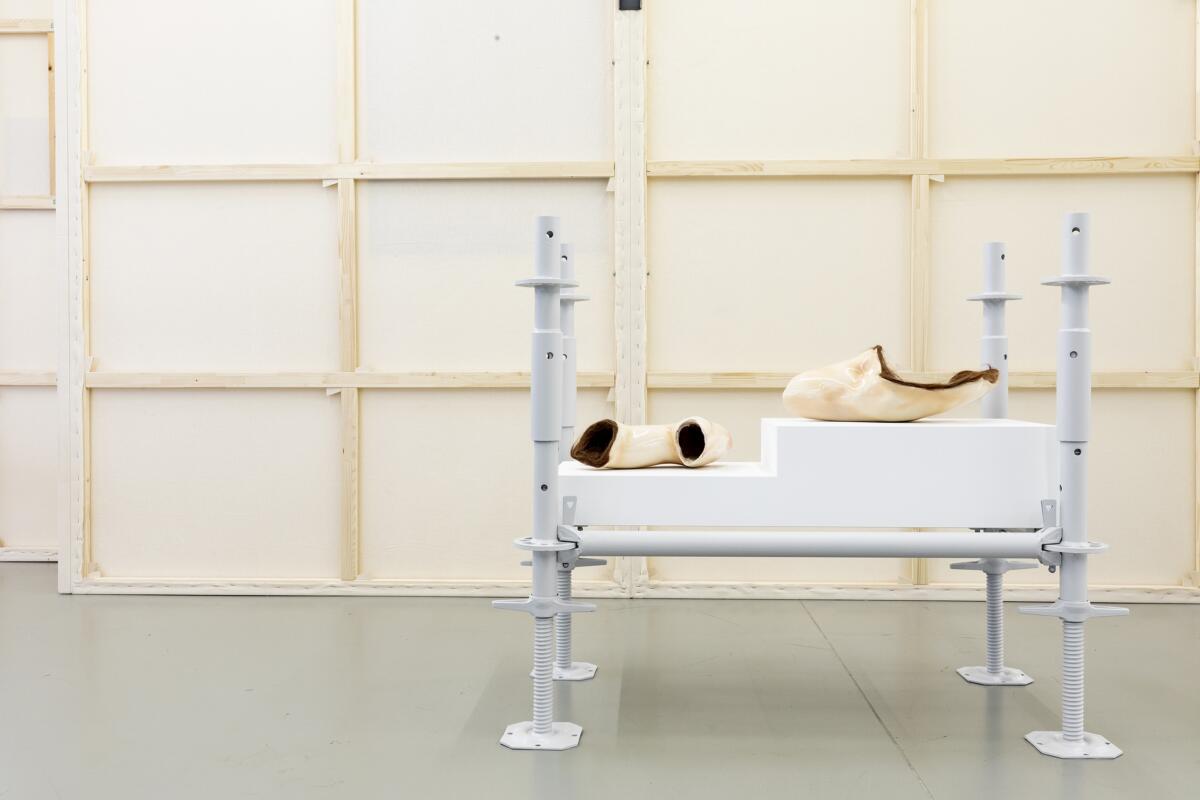
Imprint
| Artist | Bas Jan Ader, Andreas Angelidakis, Aristide Antonas, Miriam Cahn, Peter Friedl, David Harding, Edi Hila, Doruntina Kastrati, Sasa J. Mächtig, Ibrahim Mahama, Vasco Medici, Anna Molska, Elisa Pezza, Ahlam Shibli, Yannis Tsarouchis, Tercerunquinto, Allyson Vieira, Alicia Ayla Yerebakan, Armand Zanota |
| Exhibition | Life, Without Buildings |
| Place / venue | ETH Zurich, gta Exhibitions |
| Dates | 16 March - 20 May 2022 |
| Curated by | Adam Szymczyk, with assistance of Elena Bally/ Curation of works by David Harding - Salvatore Lacagnina |
| Exhibition design | Daniel Sommer, Julia Born |
| Photos | Nelly Rodriguez |
| Website | ausstellungen.gta.arch.ethz.ch/ |
| Index | Adam Szymczyk Ahlam Shibli Alicia Ayla Yerebakan Allyson Vieira Andreas Angelidakis Anna Molska Aristide Antonas Armand Zanota Bas Jan Ader Daniel Sommer David Harding Doruntina Kastrati Edi Hila Elena Bally Elisa Pezza Ibrahim Mahama Julia Born Miriam Cahn Peter Friedl Salvatore Lacagnina Sasa J. Mächtig Tercerunquinto Vasco Medici Yannis Tsarouchis |

